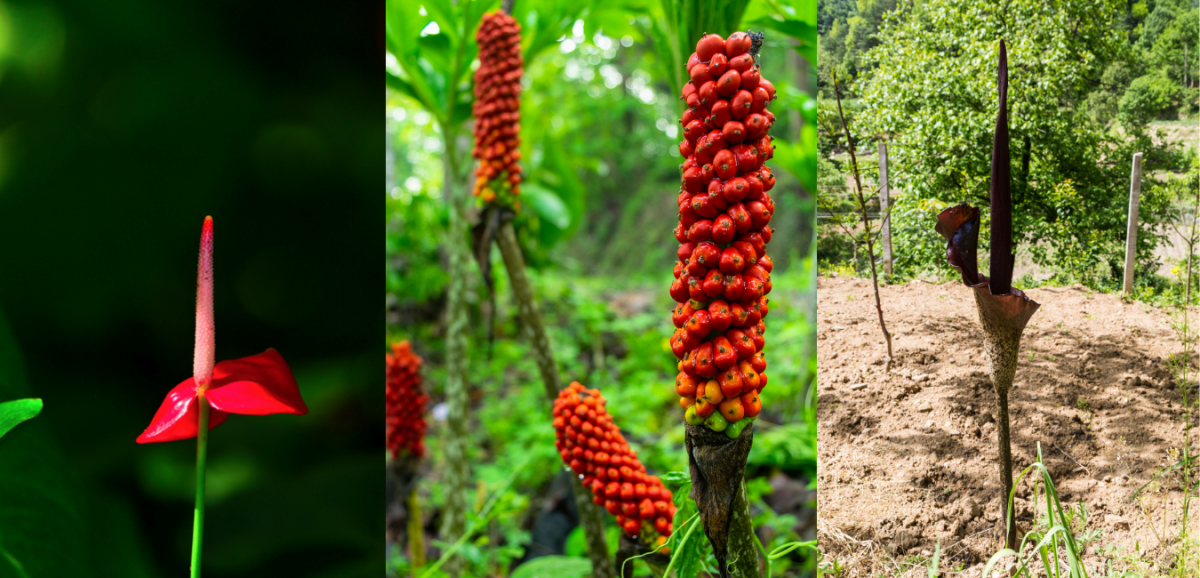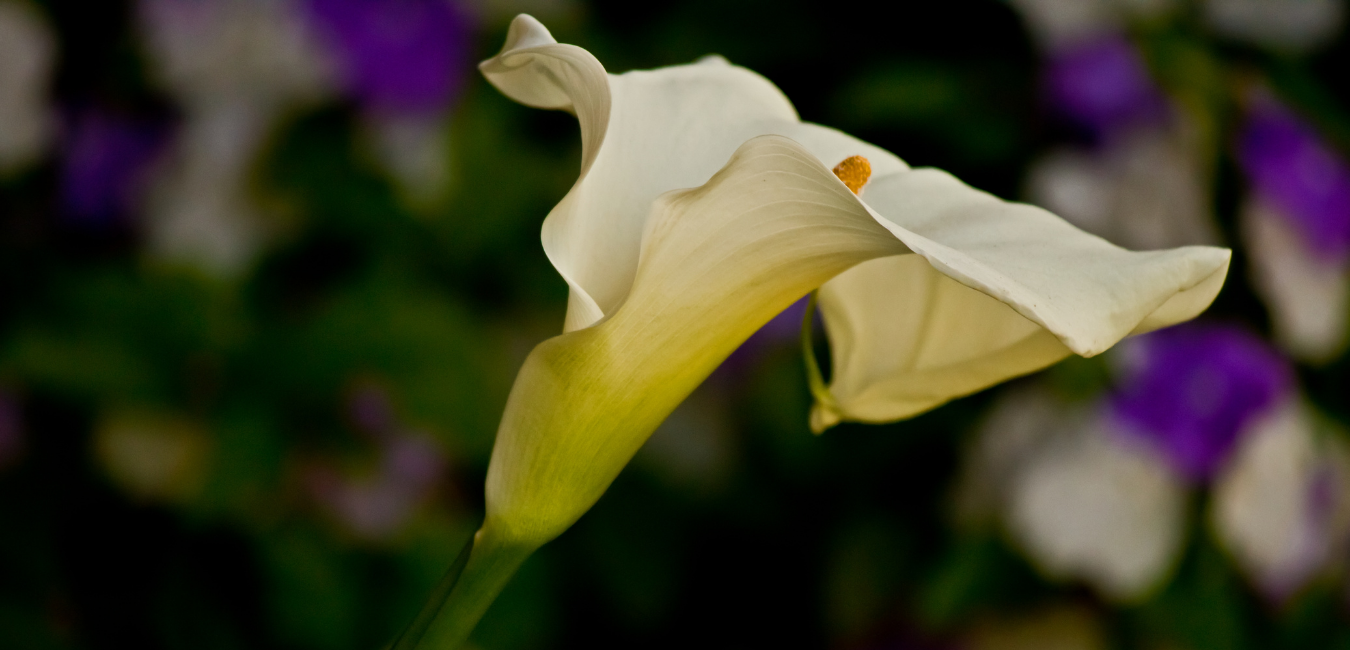A numerous records and a vibrant future
- PALAESTINE ARUM
exhibit toxicity consequently a ways constrained to most cancers cells. Future segment 1 and section two scientific trials are crucial to totally recognize
pharmacokinetics in human beings and to doubtlessly display scientific efficacy in human populations
Arum palaestinum Boiss is a widely used botanical in Traditional Arabic Palestinian natural medicine, the place it has been used to give a boost to bones and deal with cancer, parasites, infections, and many different maladies. Recent work demonstrates anticarcinogenic motion each in vitro and in vivo, and that work is coupled with a proof-of-principle mechanism of motion statistics displaying induction of the pro-apoptotic protein, caspase-6. The information to date is strongest for an Arum palaestinum extract that has been fortified with isovanillin, linolenic acid, and β-sitosterol, parts that are endemic to a crude water extract of Arum palaestinum. Safety records concerning toxicity are encouraging. Acute dosing animal research and in vitro studies, which evaluate results on cancerous and wholesome cell lines,

arum palaestinum
Physical traits and taxonomy
Arum Palaestinum Boiss. is a flowering perennial species inside the household Araceae, additionally recognised by means of its frequent identify as Solomon’s lily,1 and frequently referred to in literature as black calla lily.2 Arum Palaestinum’s membership in the large botanical household of Araceae is sizable from an ethnobotanical perspective, as this household is coming to be considered as a in particular prosperous supply of medicinal botanicals.3
Arum palaestinum is protected in the genus Arum L, alongside with Arum italicam Mill. (commonly acknowledged as Italian lords and ladies), and Arum maculatum L (known as cuckoo pint).4 Species of Arum have been in the Mediterranean place for millennia, and are represented in engraved drawings in the temple of Thutmose III in Karnak as flowers that have been added to Egypt from Canaan in 1447 BCE.5
Arum Palaestinum is recognizable by using its red-brown/purple spadix and spathe of darkish crimson. The association of its leaf blades speaks to a typically used, aptly descriptive title in Arabic that interprets to “elephant ear” ,5 whilst its seeds are identifiable by means of their shiny pink shade.
arum palaestinum
Arum palaestinum as a food-medicine
Arum palaestinum has an eclectic history as both a food and a medicine. As is often the case, its use does not fit neatly into one or either category exclusively, but rather reflects its wide use as a food-medicine. According to Yaniv,5 the de-stemmed leaves, cooked with lemon or sorrel, are considered a delicacy by Arabs, who also traditionally esteem the plant as a medicine for the treatment of cancer, for the killing of worms in animals and humans, as a means to strengthen bones, as a treatment for infections in open wounds, and as a treatment for kidney stones. Additional sources confirm its use as a traditional Arabic medicine in the treatment of cancer, internal bacterial infections, poisoning, and disorders of the circulatory system, and refer to Arum palaestinum as a botanical used in Traditional Arabic Palestinian herbal medicine.6,7, Arum palaestinum is revered as a treatment for skin sores, syphilis, rheumatism, tuberculosis, diarrhea, and stomach worms.5
The measurable anticarcinogenic effects of the fortified extract of Arum palaestinum are accompanied by an understood mechanism of action that could apply across multiple types of solid tumors.
According to a 2008 ethnobotanical study of edible plants within 5 rural districts of the Palestinian Authority, where preservation of the traditional knowledge of wild edible plants would be expected to be best maintained, Arum palaestinum was identified as one of the species rated highest for its cultural importance, a reflection of the diversity of ways in which an item is used as a food (eg, a vegetable, an herbal tea), and was cited by over half of those surveyed as a wild plant used for a food purpose.8 Consistent with a combined food-medicine use, Arum palaestinum is described in this survey as a food that is prepared by the leaves boiled in water, fried in olive oil, garnished with lemon, and consumed because of the belief that the plant helps prevent colon cancer. Also, in terms of contemporary use as a Complementary/Alternative Medicine (CAM), a 2011 questionnaire administered to a Palestinian cohort of 372 patients with cancer found that 43.5% of the cohort reported use of Arum palaestinum, making the plant the most commonly used CAM therapy among the cohort.9
Materials and Methods
To identify phytochemicals in Arum palaestinum reported to exert anticarcinogenic action, the author conducted a review of the peer-reviewed literature, using PubMed Central (PMC) and PubMed and the following search terms: Arum palaestinum, black calla lily, cancer, ethnobotany, and Traditional Arabic Palestinian herbal medicine. The author also reviewed the recently published in vitro and in vivo literature related to the anticarcinogenic activity of an extract of Arum palaestinum fortified with isovanillin, linolenic acid, and β-sitosterol, constituents that are endemic to a crude water extract of Arum palaestinum. Finally, the author reviewed mechanism of action and safety data published to date.
Discussion
As reviewed above, Arum palaestinum has extensive historical use as a food-medicine, with one of the most extensive traditional uses being as an herbal medicine used to treat cancer. When individual chemical constituents from the major chemical categories of Arum palaestinum are surveyed and connected to published literature, it is seen that a substantial number of the phytochemicals in Arum palaestinum show anticarcinogenic activity in their own right. Moreover, an extract of Arum palaestinum fortified with isovanillin, linolenic acid, and β-sitosterol shows very promising action against prostate cancer cells in vitro and in a mouse model. The anticancer potential of Arum palaestinum, combined with other emerging areas of therapeutic interest, such as preliminary evidence suggesting potential antinociceptive properties,47 portends an exciting future in the research of this botanical with an already rich ethnobotanical past.
References
- Arum palaestinum TSN 811045. Integrated Taxonomic System Information System Online Database. www.itis.gov/servlet/SingleRpt/SingleRpt?search_topic=TSN&search_value=811045#null. Accessed August 14, 2018.
- El-Desouky SK, Kim KH, Ryu SY, et al. A new pyrrole alkaloid isolated from Arum palaestinum Boiss. and its biological activities. Arch Pharm Res. 2007;30(8):927-931.
- Chen J, Henny RJ, Liao F. Aroids are important medicinal plants. Acta Hortic. 2007; 756:347-354.
- Arum TSN 42543. Integrated Taxonomic System Information System Online Database. www.itis.gov/servlet/SingleRpt/SingleRpt?search_topic=TSN&search_value=42543#null. Accessed August 14, 2018.
- Yaniv Z, Dudai N, eds. Medicinal and Aromatic Plants of the Middle-East. New York, London: Springer Dordecht Heidelberg; 2014.
- Bashar S, Omar S. Greco-Arab and Islamic Herbal Medicine: Traditional System, Ethics, Safety, Efficacy, and Regulatory Issues. Hoboken, New Jersey: John Wiley & Sons; 2001:56,305,331.
- Husein AI, Ali-Shtayeh MS, Jondi WJ, et al. In vitro antioxidant and antitumor activities of six selected plants used in the Traditional Arabic Palestinian herbal medicine. Pharm Biol. 2014;52(10):1249-1255.
- Ali-Shtayeh MS, Jamous RM, Al-Shafie’ JH, et al. Traditional knowledge of wild edible plants used in Palestine (Northern West Bank): a comparative study. J Ethnobiol Ethnomed. 2008;4:13.
- Ali-Shtayeh MS, Jamous RM, Salameh NM, et al. Complementary and alternative medicine use among cancer patients in Palestine with special reference to safety-related concerns. J Ethnopharmacol. 2016;187:104-122.
- Abu-Reidah IM, Ali-Shtayeh MS, Jamous RM, et al. Comprehensive metabolite profiling of Arum palaestinum (Araceae) leaves by using liquid chromatography–tandem mass spectrometry. Food Res Int. 2015;70:74-86.
- Jaradat N, Abualhasan M. Comparison of phytoconstituents, total phenol contents and free radical scavenging capacities between four Arum species from Jerusalem and Bethlehem. Pharmacol Sci. 2016;22 (2):120-125.
- El-Desouky SK, Kim KH, Ryu SY, et al. A new pyrrole alkaloid isolated from Arum palaestinum Boiss. and its biological activities. Arch Pharm Res. 2007;30(8):927-931.
- Afifi FU, Khalil E, Abdalla S. Effect of isoorientin isolated from Arum palaestinum on uterine smooth muscle of rats and guinea pigs. J Ethnopharmacol. 1999;65(2):173-177.
- Cole C, Burgoyne T, Lee A, et al. Arum Palaestinum with isovanillin, linolenic acid and β-sitosterol inhibits prostate cancer spheroids and reduces the growth rate of prostate tumors in mice. BMC Complement Altern Med. 2015;15:264.
- Nagaprashantha LD, Vatsyayan R, Singhal J, et al. Anti-cancer effects of novel flavonoid vicenin-2 as a single agent and in synergistic combination with docetaxel in prostate cancer. Biochem Pharmacol. 2011;82(9):1100-1109.
- Knobloch TJ, Uhrig LK, Pearl DK, et al. Suppression of pro-inflammatory and pro-survival biomarkers in oral cancer patients consuming a black raspberry phytochemical-rich troche. Cancer Prev Res. 2016;9(2):159-171.
- Shay J, Elbaz HA, Lee I, Zielske SP. Molecular mechanisms and therapeutic effects of (−)-epicatechin and other polyphenols in cancer, inflammation, diabetes, and neurodegeneration. Oxid Med Cell Longev. 2015;2015:181260.
- Ye T, Su J, Huang C, et al. Isoorientin induces apoptosis, decreases invasiveness, and downregulates VEGF secretion by activating AMPK signaling in pancreatic cancer cells. OncoTargets Ther. 2016;9:7481-7492.
- An F, Wang S, Tian Q, et al. Effects of orientin and vitexin from Trollius chinensis on the growth and apoptosis of esophageal cancer EC-109 cells. Oncol Lett. 2015; 10(4):2627-2633.
- Czemplik M, Mierziak J, Szopa J, et al. Flavonoid C-glucosides derived from flax straw extracts reduce human breast cancer cell growth in vitro and induce apoptosis. Front Pharmacol. 2016;7:282.
- Liu K, Cho YY, Yao K, et al. Eriodictyol inhibits RSK2-ATF1 signaling and suppresses EGF-induced neoplastic cell transformation. J Biol Chem. 2011;286(3):2057-2066.
- Ma L, Peng H, Li K, et al. Luteolin exerts an anticancer effect on NCI-H460 human non-small cell lung cancer cells through the induction of Sirt1-mediated apoptosis. Mol Med Rep. 2015;12(3):4196-4202.
- Yang G, Wang Z, Wang W, et al. Anticancer activity of Luteolin and its synergism effect with BCG on human bladder cancer cell line BIU-87 [in Chinese]. Zhong nan da xue xue bao Yi xue ban. 2014;39(4):371-378.
- Yang Y, Wolfram J, Boom K, et al. Hesperetin impairs glucose uptake and inhibits proliferation of breast cancer cells. Cell Biochem Funct. 2013;31(5):10.1002/cbf.2905.
- Tanagornmeatar K, Chaotham C, Sritularak B, et al. Cytotoxic and anti-metastatic activities of phenolic compounds from Dendrobium ellipsophyllum. Anticancer Res. 2014;34(11):6573-6579.
- Moore J, Yousef M, Tsiani E. Anticancer effects of rosemary (Rosmarinus officinalis L.) extract and rosemary extract polyphenols. Nutrients. 2016;8(11):731.
- Reis M, Ferreira RJ, Serly J, et al. Colon adenocarcinoma multidrug resistance reverted by Euphorbia diterpenes: structure-activity relationships and pharmacophore modeling. Anticancer Agents Med Chem. 2012;12(9):1015-1024.
- Reyes-Zurita FJ, Rufino-Palomares EE, García-Salguero L, et al. Maslinic acid, a natural triterpene, induces a death receptor-mediated apoptotic mechanism in caco-2 p53-deficient colon adenocarcinoma cells. PLoS ONE. 2016;11(1):e0146178.
- Ku CY, Wang YR, Lin HY, et al. corosolic acid inhibits hepatocellular carcinoma cell migration by targeting the VEGFR2/Src/FAK pathway. PLoS ONE. 2015;10(5):e0126725.
- Musa MA, Cooperwood JS, Khan MOF. A review of coumarin derivatives in pharmacotherapy of breast cancer. Curr Med Chem. 2008;15(26):2664-2679.
- Ali I, Wani WA, Haque A, et al. Glutamic acid and its derivatives: candidates for rational design of anticancer drugs. Future Med Chem. 2013;5(8):961-978.
- Rosenfeld CS. Antileukemic activity of phenylalanine methyl ester (PME): a lysosomotropic peptide methyl ester. Stem Cells. 1994;12(2):198-204.
- Wattenberg LW. Inhibition of neoplasia by minor dietary constituents. Cancer Res. 1983;43(5 Suppl):2448s-2453s.
- Narisawa T, Fukaura Y, Yazawa K, et al. Colon cancer prevention with a small amount of dietary perilla oil high in alpha-linolenic acid in an animal model. Cancer. 1994; 73(8):2069-2075.
- Roy S, Rawat AK, Sammi SR, et al. Alpha-linolenic acid stabilizes HIF-1 α and downregulates FASN to promote mitochondrial apoptosis for mammary gland chemoprevention. Oncotarget. 2017;8(41):70049-70071.
- Kim MO, Lee MH, Oi N, et al. [6]-shogaol inhibits growth and induces apoptosis of non-small cell lung cancer cells by directly regulating Akt1/2. Carcinogenesis. 2014; 35(3):683-691.
- Pyun BJ, Choi S, Lee Y, et al. Capsiate, a nonpungent capsaicin-like compound, inhibits angiogenesis and vascular permeability via a direct inhibition of Src kinase activity. Cancer Res. 2008;68(1):227-235.
- Rosendahl AH, Perks CM, Zeng L, et al. Caffeine and caffeic acid inhibit growth and modify estrogen receptor and insulin-like growth factor I receptor levels in human breast cancer. Clin Cancer Res. 2015;21(8):1877-1887.
- Yuan L, Wei S, Wang J, et al. Isoorientin induces apoptosis and autophagy simultaneously by reactive oxygen species (ROS)-related p53, PI3K/Akt, JNK, and p38 signaling pathways in HepG2 cancer cells. J Agric Food Chem. 2014; 62(23):5390-5400.
- Yuan L, Wang J, Xiao H, et al. MAPK signaling pathways regulate mitochondrial-mediated apoptosis induced by isoorientin in human hepatoblastoma cancer cells. Food Chem Toxicol. 2013;53:62-68.
- Bhardwaj M, Cho HJ, Paul S, et al. Vitexin induces apoptosis by suppressing autophagy in multi-drug resistant colorectal cancer cells. Oncotarget. 2017;9(3):3278-3291.
- Sramkoski RM, Pretlow TG, Giaconia JM, et al. A new human prostate carcinoma cell line, 22Rv1. In Vitro Cell Dev Biol Anim. 1999;35(7):403-409.
- Yoo NJ, Kim MS, Park SW, et al. Expression analysis of caspase-6, caspase-9 and BNIP3 in prostate cancer. Tumori. 2010;96(1):138-142.
- Shahali A, Ghanadian M, Jafari SM, et al. Mitochondrial and caspase pathways are involved in the induction of apoptosis by nardosinen in MCF-7 breast cancer cell line. Res Pharm Sci. 2018;13(1):12-21.
- Wu XX, Kakehi Y. Enhancement of lexatumumab-induced apoptosis in human solid cancer cells by cisplatin in caspase-dependent manner. Clin Cancer Res. 2009;15(6):2039-2047.
- Ben-Arye E, Samuels N, Goldstein LH, et al. Potential risks associated with traditional herbal medicine use in cancer care: a study of Middle Eastern oncology health care professionals. Cancer. 2016;122(4):598-610.
- Qnais E, Bseiso Y, Wedyan M, et al. Evaluation of analgesic activity of the methanol extract from the leaves of Arum palaestinum in mice and rats. Biomed Pharmacol J. 2017;10(3):1159-1166.




